guide to sewing: the tools

(Otherwise titled: It Doesn’t Have to Be Expensive or Complicated)
I admit: I am most definitely not a notions junkie. Although I love the idea of tons of notions and tools to make my sewing easier, both budgetary constraints and storage issues tend to win out! I’m more of the mind that fancy stuff can be acquired over time and you can still produce beautiful projects with just the basics. I often get emails about what sort of tools are necessary for starting to sew, or what sewing machine I own. Surprisingly, I do not have a super-duper new machine; all of my sewing machines (with the exception of my serger) are hand-me-downs. I have a 1950s cabinet model Singer that was my grandmothers, my mom's late 80/early 90s mechanical Singer (my "primary" machine) and my mother-in-law's 1990s Kenmore. Since I don't quilt or do machine embroidery, I find the older machines work just as well for me. Granted, I don't have things like fancy automatic bobbin winding and my machines may be a bit loud compared to newer models, but they still work!
If you're just starting to sew and on a budget, I'd highly recommend looking into getting an older machine, rather than a newer "budget friendly" model. Many of those lower end machines will not take as much of a beating as more expensive ones that have higher quality parts. Vintage machines, many of which are still in perfect working order, are usually quite reasonable and were made to last. I've seen ones at thrift stores--complete with their cases, attachments, and manuals--for under $40. (Check your city's Craigslist, flea markets, yard sales, Ebay, or even just put out the call among friends and see if anyone has an old machine sitting in their garage you can have!) You will want to make sure that the machine is in working order (it may just need a tune up; check you local sewing shops for names of service shops that repair sewing machines), that the power cords are still in good condition, and that if it's missing any attachments or the manual, you can locate those online (Ebay is great for attachments, while Google is fantastic for locating old sewing manuals that have been digitized). Also take into account the functions you will need (or think you will need if this is your first foray into sewing). Check to make sure the machine does the stitches you require (some older ones only do a straight stitch!), but also does it do buttonholes (or have a separate attachment for those)? How fast/slow does it go? Can you do blind hems on it? Will it be able to handle varying weights of fabric?
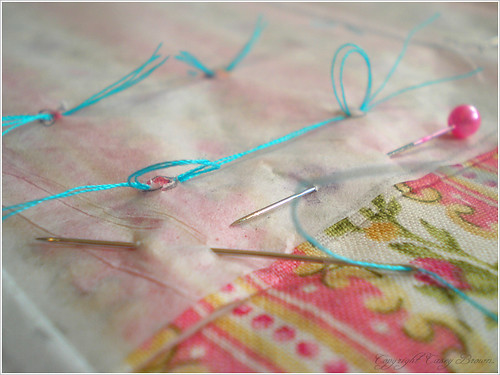
Aside from a sewing machine, there are a myriad of other tools that are out there for sewing. Some are more necessary than others, and a lot of these are based on personal preference. Here is my list of tools that I can't live without, followed by an "optional" list:
- Sewing Machine Feet Even though your machine probably did come with a set of various feet that you can attach for sewing things other than basic stitches, there are others that you can add (or upgrades to existing ones). My most-often used foot is the invisible zipper foot. But there are a myriad of others from walking feet to a zipper foot for regular zipper insertion. Just be sure to check if the foot your purchasing is compatible with your machine; different machines have varied attachment methods and even "universal" feet don't always work on every sewing machine.
- Iron and Ironing Board I am a pressing fiend; I literally press my projects after every step. It’s really true the advice you’ll read in many books that good pressing throughout the construction of a project can really make it or break it. I have a wide ironing board with a retractable sleeve board. It makes things a bit easier for pressing small or really wide pieces. I also make sure the cover I have for my board is an unbleached muslin (or twill) fabric. Bright or patterned fabric can sometimes bleed onto your project, which you don’t want!
As for irons, it’s one of those personal preference things. Most basic irons have an auto-cut off feature which can be annoying, so keep that in mind when shopping around. Also pay attention to heat settings, steam control (I steam things a lot, so a large resevior and adjustable steam settings are a must). One other thing I am particular about is the weight of my irons. I prefer them to be on the heavy side, as I hate having to press down with my own body weight to put enough pressure on something (although a clapper can take care of this problem; I’ll talk about pressing tools a bit later). - Pressing Cloth Necessary when pressing items that might be scorched, have special surface finishes (like glitter), or to protect your iron’s foot plate from residue (such as when using a fusible interfacing). Skip the expensive store bought ones and just scrounge yourself a piece of cotton muslin or cotton batiste (something lightweight). If you want to get really fancy, you can hem the edges, but pinking works just as well!
- Dressmaker Shears I swear by my all-metal Gingher shears. My mom always had a pair of super sharp metal scissors for fabric cutting, and I knew the value of them from an early age. While metal shears are a bit pricey, they are worth the investment as they’ll last for years. I even dropped mine on a concrete floor one time and although one blade got nicked, I was able to have them sharpened and the imperfection buffed out. I waited until cutting tools were on sale to buy mine, which meant they were a little more affordable. I cannot cut fabric without my dressmaking shears--they slide through any fabric like butter! Worth. Every. Penny. Just be sure to reserve them only for fabric so they stay sharp.
- Pinking Shears Great for finishing seams or creating a decorative edge. Make sure you only use yours for fabric; these get really dull when they’re used on paper (so have a separate pair for paper crafting!). My favorite that I’ve used recently are just the run of the mill Fiskars pinking shears.
- Paper Scissors For cutting things like pattern paper and interfacing. I have a pair of inexpensive paper scissors that I keep near my sewing area. I replace them every few years since they do get dull from chopping away at paper and things after awhile!
- Thread Snippers Not completely necessary, but I consider them a must-have because keeping your bigger scissors nearby while you’re sewing to snip threads is a big pain (and too many times I’ve knocked them off the table, nearly stabbing my foot!).
- Pins and Pincushion Necessary when cutting out fabric, pinning pieces together during construction and testing hem length. There are a variety of pins on the market, some of which are suited to sewing specific fabrics, while others are more "universal". Pins are like many tools in sewing: you try a few different kinds until you find the ones you love. My favorite are the longer pins with large, colored heads (great for when you've dropped one on the floor!). You'll also need a pincushion of some sort; whether the old-fashioned tomato, something handmade, or a magnetic one (my pincushion of choice), make sure you have some place to safely store all your pins!
- Rulers I can’t work without my 18” ruler and yardstick! Especially when I’m altering patterns or drafting them. I just buy wood yardsticks at the hardware store as they’re cheaper than most fabric stores. I have two different 18" rulers: one is metal and the other is a 2" wide gridded plastic one (found in the quilting section at JoAnns). The latter I tend to use more often for drafting and altering patterns.
- Seam Gauge A mini ruler with a sliding marker that you can use to “keep your place” anywhere along the edge. These are usually about 6” long and indispensable for checking seam allowances and hemming.
- Seam Ripper You will make mistakes. I do, and so do the most experienced seamstresses, so invest in this little item to make your sewing experience easier. I prefer the small ones, rather than the larger, “ergonomic” ones. I find the larger ones have thicker blades which make it hard to pick small stitches out. (In a pinch, I have been known to use my thread snippers too!)
- Hand Sewing Needles Even if you’re mostly a machine sewer, you probably will have an instance occasionally for needing to sew by hand. I keep a variety of sharps on hand at all times and a variety pack of embroidery needles. I also keep some blunt embroidery/tapestry needles on hand for things like turning loops and such.
- Marking Tools Having a variety of marking tools on hand for indicating darts and other pattern markings is a must! I keep marking pencils, pens, chalk paper (I prefer not to use wax paper since the wax can bleed and not always wash out) and chalk squares (my favorite) at all times. At the very least, make sure you have marking chalk and marking pencils on hand. Generally these come in white, yellow and blue to allow for marking on various colors of fabric.
- Cutting Board Do not, I repeat: do not try and pin/cut out projects on your dining room table. You will nick the surface (trust me, I know!). Conversely, unless you freshly washed your kitchen floor, don't lay out your fabric for cutting on that surface either; bits of dirt and stains invisible to your eye may latch themselves onto your beautiful material and show up only after you sewed the garment up and set the stains by pressing. Save yourself some hassle and invest in a simple cardboard cutting board. I replace mine every couple years as I use it not only for cutting patterns, but drafting that consequently leads to writing notes all over it (I jot things down as I go so I won't forget!). Some prefer the more rigid (but not suited to mad note-taking) plastic cutting boards traditionally used for quilting and rotary cutting. The latter tends to be a bit more pricey.
- Blunt Instrument Okay, I know that sounds like something out of a horror movie, but let me explain! If you sew collars, belts, or anything else that may have a point that needs to be precisely turned outward after sewing, a blunt but pointed tool is essential. I usually just grab one of my larger knitting needles for this job (so if you knit already, you're in luck!), but I would imagine that sewing stores do have some notion specifically for this...
- Tracing Paper While this may not seem like a necessary item, if you do any amount of sewing you know that it's handy to have some sort of paper to trace altered pieces, or even additions to a pattern you make (like a new pocket, neckline facing, etc.). Some use the large pads of tracing paper found art stores, typing paper, or rolls of blank newsprint or banner paper (found at office supply stores). Whatever you use, it's just helpful to have within arm's reach!
- Storage Container(s) Probably the most necessary of all your sewing tools: you need a place to stow all this stuff! Be it a cardboard box you nabbed from a friend, a plastic bin, or even an old dresser dedicated solely to your sewing things, keeping all your notions and tools in some semblance of order and availability is crucial. I tend to have things in a few different storage spots (all within the same room) using a mish-mash of Ikea wood desktop drawers, plastic boxes, and cardboard containers left over from moving. The real key is keeping the things you use most (seam ripper, sewing needles, scissors) close to your sewing area, and the fabric and patterns can be stashed in a less accessible spot.
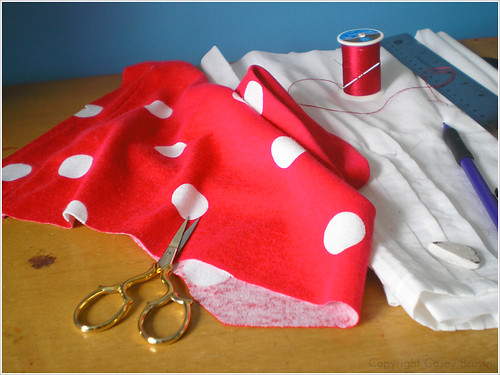
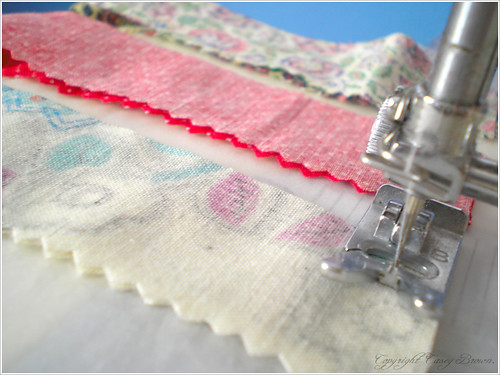
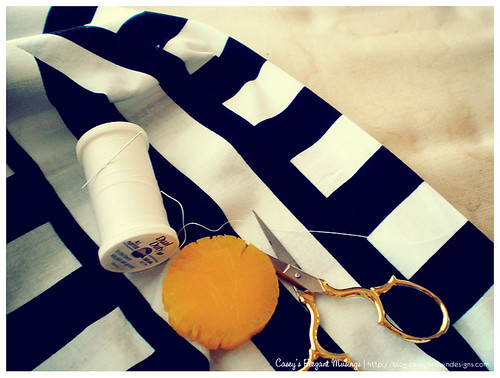
The following is the list of items that aren’t completely necessary, but still fall into the basics and things-that-make-your-life-easier categories. If you start sewing without these, the sewing gods won’t curse you, but they are worth considering investing in over time!
- Pressing Tools A good clapper, point presser and ham are fantastic and really help when sewing garments. A clapper is a large, wood piece that you “clap” down on a seam or element that needs to be flattened after steaming it (it traps the heat in and the weight helps the pressing). I use this a lot when working with bulky material or on things that need to be really crisp and tailored. My point presser and clapper are one in the same; the top of the clapper just has a small extension that has a sharp point on one end. I can put corners that need to be pressed (but not flattened) over this point and press them. A pressing ham is fantastic for pressing sleeve heads, curvy necklines and princess seams (just to name a few things), as it’s rounded shape helps to mold the fabric as you press it. They tend to be pricey, but I know I have heard of people making their own, so you might want to check into that if you’re on a budget! Another pressing tool that is nice, but isn’t necessary is a small, round roll. It’s long, but about the diameter of a wrist, so it’s great for pressing cuffs and other small pieces that are similarly shaped.
- Tube Turner I finally bought myself one last year and have been loving this little device! It's basically a simple piece of heavy wire with a finger loop at one end and a latch at the opposite, but for turning narrow tubes of fabric or spaghetti straps, it's proved invaluable!
- Serger As a recent convert to the serger (remember, I had been sewing for quite a while before I got one, so you don't need one!), I have to admit I really love this little device. Besides being great for constructing knits, it's a whiz at finishing seams (which used to be my arch-nemesis in sewing). Although I plan on doing a more in-depth post on my serger in the future, suffice to say that I did not buy the most expensive (or even sort-of expensive) model out there, but if you find you need one, it's worth saving up for!
- Dress Form If you find that you frequently sew garments, I highly recommend eventually looking into buying a dress form. Although I sewed for quite some time without one, things became a bit easier once I had something to put my half-finished garments on and use as a fitting assistant! A dress form can't replace fitting on your actual body, but for small tweaks and such they're invaluable. Again, this is something that you can find vintage models for less than a new one, or you can opt for an adjustable form (I have a Dritz adjustable form purchased at JoAnns) or a non-adjustable form (most often the kind we see professional dressmakers/designers use). They can be pricey, so be sure to shop around! If you're more of the DIY mind, then you can even make your own!
- Pattern Weights I hesitated to not include these in the "essentials" list, because I use mine a lot. But to get started, you really don't need them. Pattern weights as sold in sewing stores can be pricey, but there are some budget-friendly options. You could use soup cans, make your own, or use large metal washers from the hardware store (what I use). These are great if you're laying out a pattern and a myriad of other sewing uses!
- Rotary Cutter and Mat I still do not have either a rotary cutter or self-healing cutting mat, but fellow sewing friends swear by these! Another investment to be made if you feel that it would be useful for your sewing tool arsenal. I know some sewists have mastered the rotary cutter enough to use on curves, but this tool is most helpful for straight-edged cuts.
- Hem Marker This is super helpful if you don't have someone to assist in marking hem lengths on skirts and dresses. I bought one a few years ago at a rummage sale, and it's been the best $5 I ever spent! The principle is simple: a freestanding pole holds a chalk dispenser that puffs out chalk dust onto the garment in a small line when you squeeze an attached air-bulb, and most can mark hems from a couple to over 20 inches from the ground. I use mine all the time!
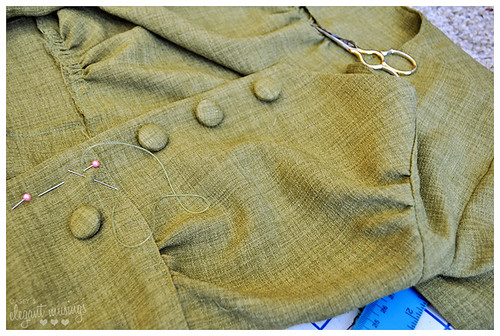
I am sure I have inadvertently left some tools off this list, and of course there are the sewing gadgets I don't have or use that others may love! So if you sew, what is your favorite sewing tool? Up next: print and web resources to get you started!
Click here for part one of this series: guide to sewing: my background.

Comments
Post a Comment
Thank you so much for taking time to comment! I LOVE hearing feedback from readers. I welcome truly constructive and thoughtful critique and suggestions, but will not hesitate to delete spam or downright rude comments.